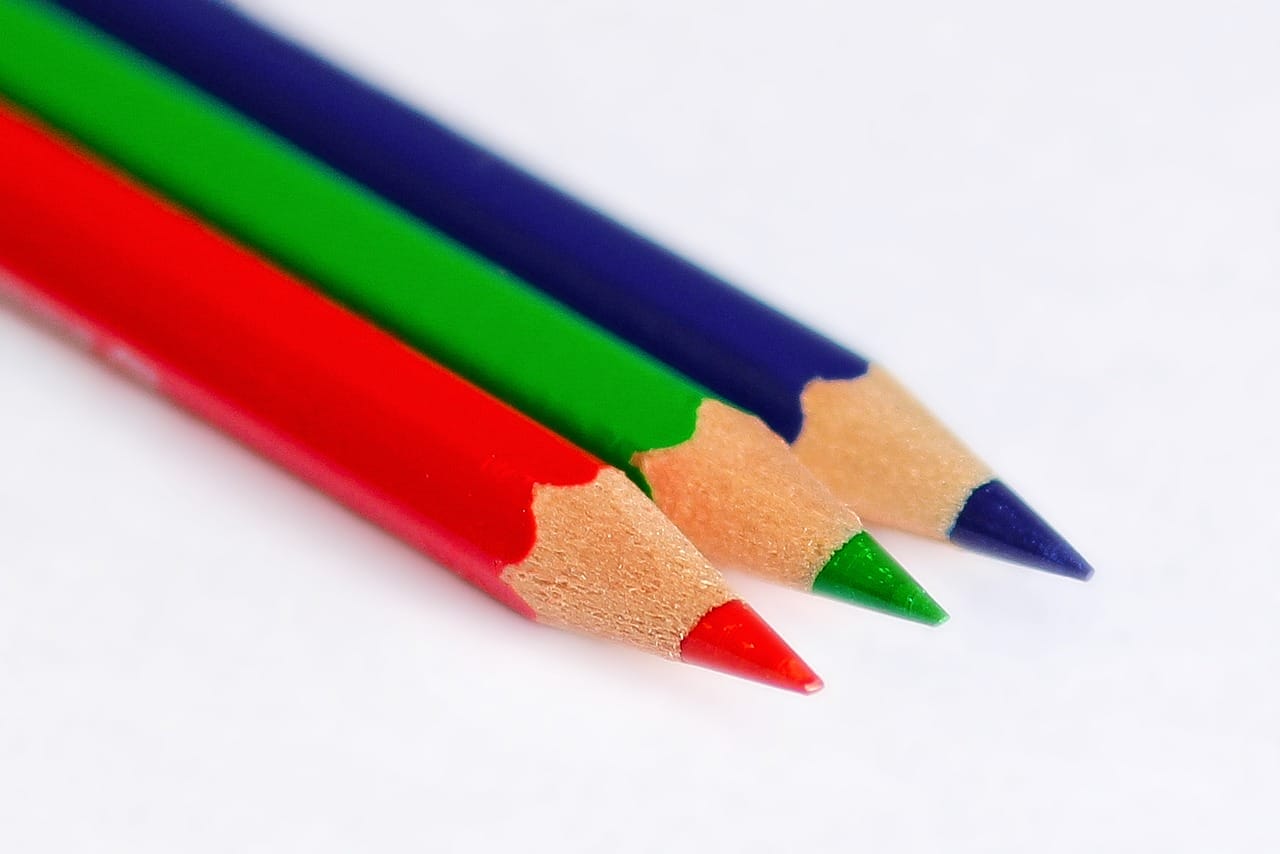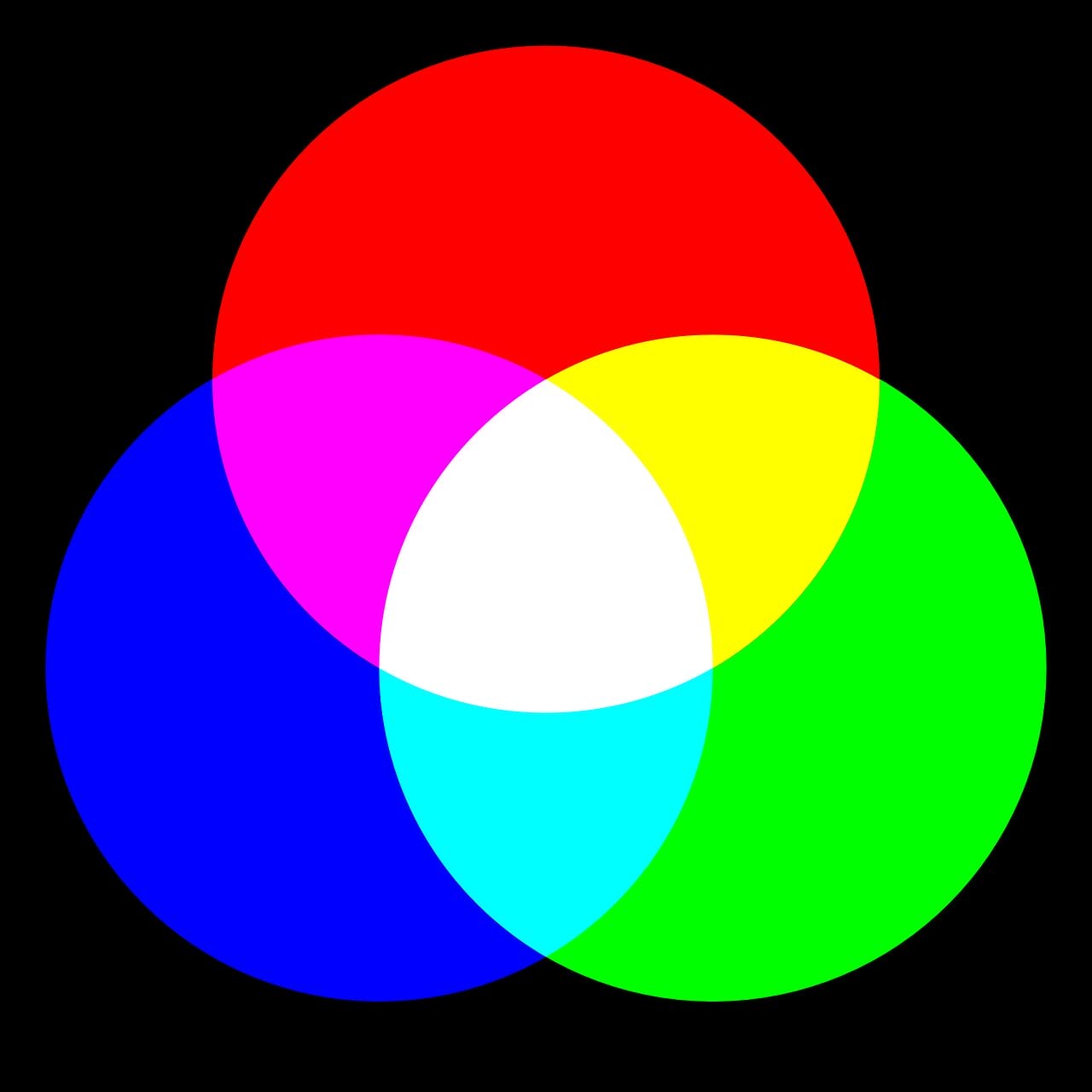From Rainbows to Pixels. Ever look at a stunning sunset and marvel at the explosion of reds, oranges, and purples splashed across the sky? Or stare in awe at a high-definition TV displaying a million vibrant hues?
The magic behind all that colour magic boils down to a simple concept: RGB.
But RGB, which stands for Red, Green, and Blue, is more than just an abbreviation.

It’s the foundation of how we see and create colour in the digital world.
From early scientific discoveries about light to the flashy keyboards of today’s gamers, the story of RGB is a fascinating journey through science, technology, and human ingenuity.
Planting the Seeds: Unraveling the Rainbow.
The story starts way back in the 17th century with Isaac Newton.
While most of us associate him with gravity and apples, Newton was also curious about light.
He conducted a series of experiments where he passed sunlight through a prism, separating it into a beautiful spectrum of colours – the rainbow.

This groundbreaking discovery hinted at the building blocks of colour, but it would take another century to fully understand the human eye’s role in perceiving these colours.
The Tricky Trio: How We See Colour.
Fast forward to the 1800s, and enter Thomas Young and Hermann von Helmholtz.
These brilliant minds proposed the Young-Helmholtz theory of trichromatic colour vision.
Here’s the gist: our eyes have three types of cone cells, each sensitive to a specific range of light wavelengths – red, green, and blue.

When stimulated in various combinations, these cones send signals to the brain, creating the perception of a vast spectrum of colours.
This theory was groundbreaking. It explained why mixing paint pigments (a subtractive colour mixing process) worked differently than mixing coloured lights (additive colour mixing).
The idea that just three primary colours could create a multitude of hues was a powerful concept.
The Birth of a Star: RGB Takes Center Stage.
Enter James Clerk Maxwell, a 19th-century scientist with a knack for groundbreaking demonstrations.
In 1861, he took the Young-Helmholtz theory a step further.
He captured three black and white photographs of a tartan ribbon using red, green, and blue filters.
Then, in a mesmerising display of science magic, he projected these filtered images simultaneously onto a screen.
The result? A full-colour image – the first-ever colour photograph!

This experiment not only proved the trichromatic theory but also showcased the power of RGB in creating colour.
From Stage Lights to Television Screens: Making RGB Practical.
Maxwell’s work laid the foundation, but putting RGB into practice took time.
Early colour photography processes were complex and cumbersome.
However, the 20th century saw advancements in phosphors – materials that glow under light stimulation.
These formed the basis for colour television displays. By carefully arranging red, green, and blue phosphors and bombarding them with electron beams, engineers could create a vast array of colours on the screen.
The Digital Revolution: RGB Conquers Computers.
The arrival of computers in the mid-20th century presented a new challenge: displaying colours on monitors.
Early computer screens were primarily monochrome, but the potential of RGB was undeniable.
By the 1980s, personal computers embraced RGB, using tiny red, green, and blue dots (pixels) to create a dazzling digital palette.
This allowed for the development of sophisticated graphics software and paved the way for the visual feast we experience on computers today.
Beyond the Screen: RGB Lights Up the World.
RGB’s influence wasn’t limited to screens. The invention of LEDs (light-emitting diodes) in the early 20th century opened up a whole new world of possibilities.

These tiny, energy-efficient lights could be made in red, green, and blue, making them perfect for creating coloured displays.
From traffic lights and car dashboards to architectural lighting and home décor, RGB LEDs have revolutionised the way we light our world, adding a vibrant touch to everything from cityscapes to living rooms.
The Rise of the Rainbow Warriors: RGB and Gaming Culture.
In recent years, RGB has become a defining feature of the gaming world.
From keyboards that pulse with a million colours to computer cases that light up like mini disco balls, gamers have embraced RGB with gusto.

This isn’t just about aesthetics; some gamers believe strategically placed RGB lighting can enhance their performance by providing visual cues or creating a more immersive experience.
The Future of RGB: A Spectrum of Possibilities.
The story of RGB is far from over. Researchers are constantly exploring new ways to use this versatile technology.
We might see even more vibrant and efficient displays, advancements in colour therapy using light, and even the development of flexible and transparent RGB displays that can be seamlessly integrated into our environment.
From the scientific curiosity of Isaac Newton to the flashy displays of
gamers, RGB’s journey has been a fascinating exploration of colour and light.
It’s a testament to human ingenuity and a reminder that even the most basic scientific principles can lead to incredible technological advancements.
Here are some exciting possibilities for the future of RGB:
Hyper-realistic Displays: Imagine a world where your computer screen can display colours so vivid and lifelike, it feels like you’re looking through a window into another world.
Advancements in nanotechnology and OLED displays could push the boundaries of colour fidelity, making RGB even more immersive.
Personalized Lighting Environments: Imagine a home lighting system that adjusts the colour temperature and intensity throughout the day, mimicking natural light patterns and promoting better sleep and well-being.

RGB LEDs, combined with smart home technology, could create dynamic and personalised lighting experiences.
Augmented Reality and Virtual Reality: As AR and VR technologies continue to evolve, RGB will play a crucial role in creating realistic and immersive experiences.
Imagine being able to walk through a virtual forest with sunlight filtering through the leaves, or interacting with augmented reality objects that seamlessly blend with the real world – all thanks to the power of red, green, and blue.
Biomedical Applications: Researchers are exploring the potential of using specific RGB light frequencies to treat certain medical conditions.
Phototherapy, for example, uses specific wavelengths of light to treat skin conditions like psoriasis.
As our understanding of the interaction between light and biology grows, RGB might play a role in developing new medical treatments.
Beyond Technology: The Cultural Impact of RGB.
The influence of RGB extends beyond the realm of technology. It has become a cultural phenomenon, a way to express individuality and creativity.
From the vibrant lights of music concerts to the colour-changing LED clothing at fashion shows, RGB has become a visual language that captures the imagination.
The story of RGB is a reminder that the most fundamental scientific principles can have far-reaching consequences.
It’s a story of curiosity, innovation, and the human desire to create and experience the world in ever-more vibrant ways.
As we continue to explore the possibilities of RGB, we can only imagine what the future holds for this remarkable technology and the colourful world it helps create.
Conclusion.
So next time you witness a breathtaking sunset, take a moment to appreciate the incredible science behind it.
The same principles that govern the vibrant hues in the sky are the foundation for the dazzling displays we encounter every day.
From the mesmerising glow of your computer screen to the pulsating lights of your gaming setup, RGB’s colourful journey is a testament to human ingenuity and a glimpse into a future filled with even more vibrant possibilities.
After all, the world is a much more beautiful place when viewed through the lens of red, green, and blue.
Thank you for taking the time to read my post From Rainbows to Pixels. If you’d like to add a comment or thought on this post, please use the comments section below. I can also be contacted via the online contact form. Keep up to date with the latest news on social media.

